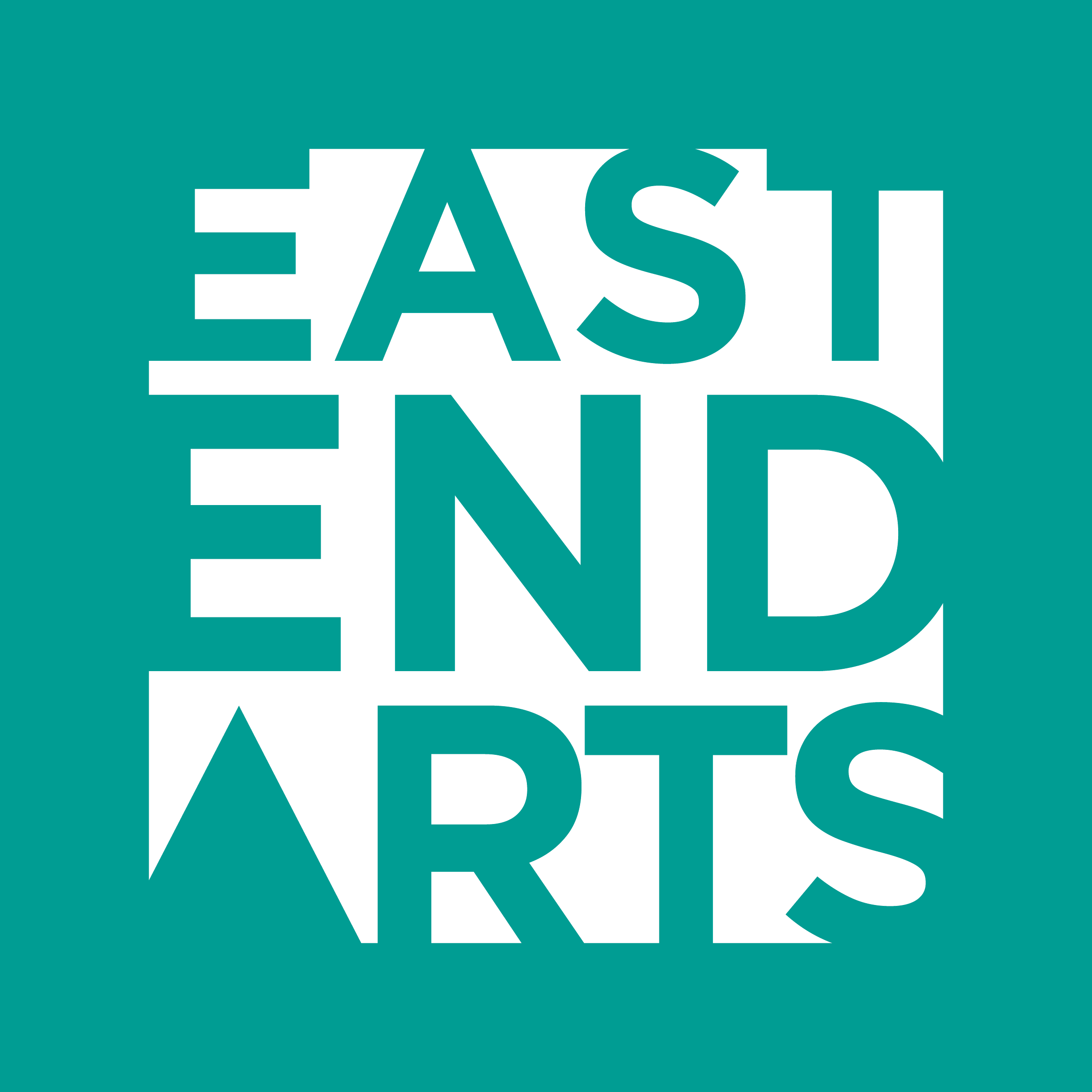A Spoonful of Art Helps the Medicine Go Down
At the end of March, East End Arts staff, along with our colleagues from the other LASOs and The Toronto Arts Foundation, got a little science lesson over Zoom! We thought a recap of this event would be a really interesting blog post, so Adam our Programmer put together this post to summarize what we learned and some of our thoughts on the topic!
RECAP: We asked biology students from University of Toronto at Scarborough to put together a detailed presentation for us about the science behind “social prescription.” We’d heard about the idea of social prescribing the arts, and of course we are all long-time believers in the healing power of the arts for people’s mental health and sense of community and belonging, but the idea that the arts could heal people’s bodies was something we needed the experts to explain. And we are so glad we did, because this growing field could be a total game changer!
What is Social Prescribing or Social Prescription?
Basically, the idea is that your doctor can prescribe a trip to the museum, or participation in a dance class, or something other than “medicine” to help treat not only your mental health, but an incredible range of physiological concerns as well. It’s becoming popular in the United Kingdom, and other places with strong socialized health care systems, and there’s a growing body of work to suggest that art truly heals.
A Rundown on the Science that We Learned:
Here are some of the examples of how the arts can be used in social prescription to improve a range of physiological conditions.
- Dance has been shown to improve physical and emotional health of patients with Parkinson’s disease and stroke. Gait and balance are among the physical improvements patients gained in dance classes and participation satisfaction improved mental health.
- One of the factors that limits the usage of social prescription in autistic children and adults is their hypersensitivity to stimuli. Wall paintings and artworks can be chosen in classrooms and practitioner offices such that patients communicate better.
- Art Therapy for patients battling dementia led to long-term improvements in mental acuity, physical engagement, calmness, and sociability. In addition, staff noticed increased recognition and conversation from dementia patients.
- Mozart’s music has also been shown to reduce the frequency of seizures in epilepsy patients.
- Music, specifically Neurologic Music Therapy (NMT), has shown much promise in improving the mobility and stability of gait in patients with Parkinson’s Disease. Through a combination of various techniques, including RAS, PSE, and TIMP, patients with PD were able to improve many spatial and temporal aspects of gait.
- Bedside theatre performances can be useful in entertaining and decreasing stress in hospitalized children. These performances can also be used to teach children coping mechanisms and breathing exercises to be used in stressful situations, such as taking medication or medical procedures.
If you’d like more detail, click here to view the workbook and annotated bibliography prepared by UTSC Students for Spoonful of Sugar.
What does this Mean for Community Arts?
 A lot! For many of us in the field of community arts, we do our work because we want to make our communities better, healthier places to live. And this, at least for me (Adam the Programmer), has always felt like an ephemeral “touchy feely” kind of thing, but now we have hard evidence to support the idea that what we do really does make people healthier. It means that the work we and indeed all artists do deserves to be a crucial part of the recovery process from COVID-19. Not only as a part of the economic recovery (a reminder that there are more artists than autoworkers in this country, and many of those remain still out of work over a year later – that’s a huge economic problem), but ALSO that the work of artists can be part of the physical recovery of our communities.
A lot! For many of us in the field of community arts, we do our work because we want to make our communities better, healthier places to live. And this, at least for me (Adam the Programmer), has always felt like an ephemeral “touchy feely” kind of thing, but now we have hard evidence to support the idea that what we do really does make people healthier. It means that the work we and indeed all artists do deserves to be a crucial part of the recovery process from COVID-19. Not only as a part of the economic recovery (a reminder that there are more artists than autoworkers in this country, and many of those remain still out of work over a year later – that’s a huge economic problem), but ALSO that the work of artists can be part of the physical recovery of our communities.
There are already great stories about this happening from abroad and close to home. Opera singers, who have some of the best training and control over their respiratory systems, have begun teaching those techniques to COVID long haulers who need to recover lost lung capacity.
The impacts of public art are often considered in the ways that they can improve the economies of our communities – we know that having destination art or “Instagram-moments” in (for instance) mural strategies can attract shoppers to local BIAs, and investing in creating new performance spaces can have resounding effects for local restaurants. More ephemerally, we also know that public art improves the human experience of moving through our shared public spaces – we refer to it as “the principle of surprise and delight” – by getting a bit of beauty on our morning commute or running errands, we feel more at home and more inspired. But can our work as creators of public art actually improve the physical health of our communities? We think so.
An Alternative Rationale for Arts Funding
For years now the rationale for funding the arts has been based on that economic model. It’s a good enough reason to fund the arts, but the reality is that, like anything based on economics, it privileges the creation of work in major downtown centres where economic activity is centred. By expanding our rationale for funding the arts and including their potential health outcomes, both mental and physiological, we can better serve a broader range of communities, because while not all communities can benefit from economic stimulus from the arts, they can all benefit from better health.
 As governments and arts-funders begin to explore the idea of universal basic income for artists as a means of economic support (supporting those arts workers directly will increase their ability to participate in the recovery-economy), we should also explore new ways of supporting health with our cultural investments. The city of Toronto’s public arts strategy is one of the most creative and artist led strategies in the world. A Creative City Block By Block is an enviable goal, and one we at EEA are deeply committed to. How beautiful would it be for us as art-makers to be able to support the work of front line healthcare workers by creating opportunities for improved health that may lessen their load. Any interventions we make that can improve the health outcomes of our communities directly benefit our healthcare system, and we know now how crucial that can be. Imagine if our hospitals had fewer Parkinson’s patients, or people with epilepsy, or dementia seeking care, because their health outcomes were so improved by being completely surrounded by art. Imagine a world where your high blood pressure or generalized anxiety can be treated by going to the weekly concert in your local park. Imagine a world where artists are healers and communities come to story tellers for medicine. That is a post-pandemic world we all deserve, beyond just in our imaginations.
As governments and arts-funders begin to explore the idea of universal basic income for artists as a means of economic support (supporting those arts workers directly will increase their ability to participate in the recovery-economy), we should also explore new ways of supporting health with our cultural investments. The city of Toronto’s public arts strategy is one of the most creative and artist led strategies in the world. A Creative City Block By Block is an enviable goal, and one we at EEA are deeply committed to. How beautiful would it be for us as art-makers to be able to support the work of front line healthcare workers by creating opportunities for improved health that may lessen their load. Any interventions we make that can improve the health outcomes of our communities directly benefit our healthcare system, and we know now how crucial that can be. Imagine if our hospitals had fewer Parkinson’s patients, or people with epilepsy, or dementia seeking care, because their health outcomes were so improved by being completely surrounded by art. Imagine a world where your high blood pressure or generalized anxiety can be treated by going to the weekly concert in your local park. Imagine a world where artists are healers and communities come to story tellers for medicine. That is a post-pandemic world we all deserve, beyond just in our imaginations.
Student Presenters from UTSC:
Nikol Digtyar, Talia Ho, Justin Macusi, Francis Miranda, Zachary Osborn, Menisha Sivanathan
Additional Reading on Social Prescribing:
- Wikipedia.org – Social Prescribing
- News.sky.com – Social prescriptions to play key role in post-COVID-19 Recovery
- Globalnews.ca – Social Prescriptions during the COVID-19 Pandemic
Photo Credits:
Banner Image – Colourful Pill by JOSHUA COLEMAN
Image #2 – Plasma – by Josh Riemer
Image #3 – Colourful Hands – by Tim Mossholder
Image #4 – Art Gallery Visit – by Tanya Pro

